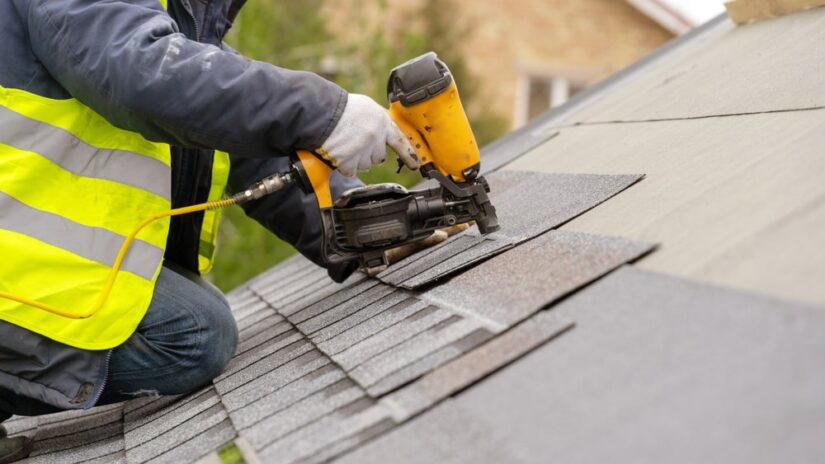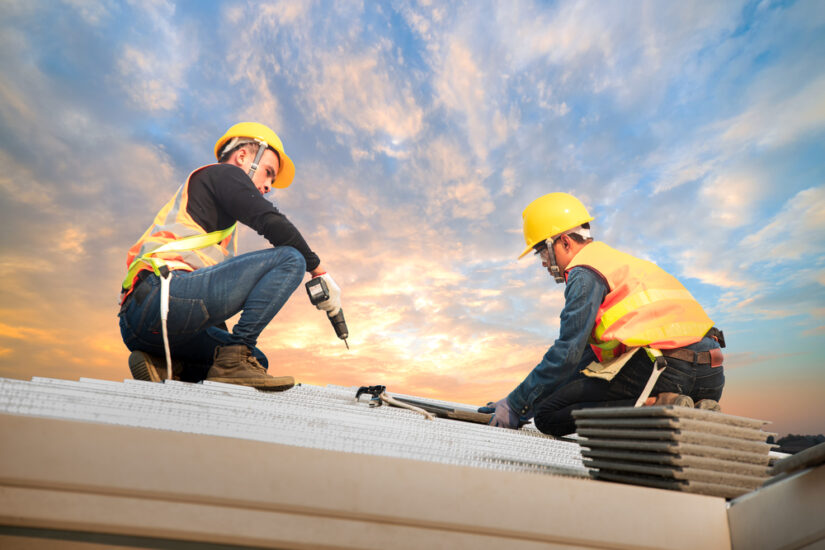Is It Hail Damage Or Blistering—And What Repairs Actually Make Sense
When you notice damage on your roof, it’s important to determine whether it’s hail damage or blistering, as each requires different repairs. Hail damage typically involves dents or punctures that penetrate the roofing material and can often qualify for insurance coverage, while blistering is usually a surface-level issue caused by heat and moisture and generally means out-of-pocket repairs. Knowing the difference helps you avoid denied claims and unnecessary expenses.
Your roof’s health depends on accurate identification of the problem so you can take the right steps. Hail damage often appears in patterns where hailstones struck, whereas blistering shows up more randomly, usually near areas where moisture collects. These visual clues, combined with the extent of damage, guide you toward effective solutions and protect your home’s value.

Understanding the Differences: Hail Damage vs. Roof Blistering
What Is Hail Damage?
Hail damage occurs when hailstones hit your roof during a storm. The impact causes physical dents or cracks, primarily affecting shingles, tiles, or metal roofing. These impacts can loosen granules on shingles, exposing the underlayer and accelerating wear.
Hail damage often compromises waterproofing, raising the risk of leaks. It usually appears after a sudden storm and is concentrated in uneven circular dents or depressions scattered across your roof surface.
Prompt assessment is important for insurance claims and to prevent further damage. Only a professional can gauge the extent and recommend whether spot repairs or full replacement is needed.
What Causes Roof Blistering?
Roof blistering happens due to trapped moisture or air under the roofing material. It’s not caused by external forces, but by internal issues like poor ventilation, high humidity, or manufacturing defects in shingles.
You’ll see raised bubbles or blisters on the surface, often filled with air or water vapor. These blisters expand and can eventually break, exposing your roof to water penetration.
Blistering develops slowly over time and indicates ongoing problems with moisture management. If ignored, it can lead to widespread damage and shorten your roof’s lifespan.
Recognizing the Signs: Inspection and Identification
Clues for Identifying Hail Damage
Hail damage typically appears as small, circular dents or pockmarks on shingles or roofing materials. These impacts can cause granules to loosen or dislodge, exposing the asphalt layer underneath. You might also notice cracks or splits in the shingles, or even bruises that feel soft when pressed.
Look for signs such as damaged gutters, dents on metal flashing, or damage to other exterior surfaces, which often accompany hail strikes. It helps to conduct your inspection shortly after a hailstorm when damage is easier to spot. Documenting these signs with photos can support insurance claims.
Spotting Blistering on Roofing Materials
Blistering shows up as raised bubbles or bumps on the surface of shingles caused by trapped moisture or manufacturing defects. Unlike hail damage, blisters tend to be round, regularly spaced, and often found on the granule surface rather than sharp dents.
You may notice the blisters cracking over time or granules flaking off due to the surface deterioration. These areas typically don’t exhibit the impact marks associated with hail. Blistering is often less urgent but can worsen with time if ignored.
When to Call a Professional Roof Inspector
If you are uncertain about the damage type or extent, calling a professional roof repair company in Indianapolis is essential. Their experts use specialized tools and experience to detect underlying issues that aren’t visible.
A thorough inspection can differentiate between hail damage, blistering, and other roofing problems that might look similar. This ensures you make the right repair decisions, avoid unnecessary expenses, and strengthen your insurance claims when applicable.
Repair Options That Make Sense
Assessing the Extent of Roof Damage
Start by inspecting your roof closely for visible signs of damage. Look for dents, cracks, or missing granules that indicate hail damage, which typically results in impact marks on shingles. Blistering, by contrast, shows as raised bubbles or blisters on the roofing material caused by trapped moisture or poor ventilation.
Document all affected areas with photos and notes. This evidence will help if you file an insurance claim, especially since hail damage is often covered but blistering usually is not.
If damage is minor, you might handle repairs yourself, but extensive damage requires a professional inspection to evaluate structural integrity and estimate repair costs. Delaying assessments can lead to leaks, mold growth, or further shingle deterioration.
Effective Repair Solutions for Hail Damage
For hail damage, repairs focus on replacing or restoring impacted shingles to restore your roof’s protection. The repair process typically involves:
- Removing damaged shingles carefully
- Inspecting the underlayment for moisture or structural damage
- Installing new, matching shingles
- Sealing edges to prevent water intrusion
Prompt repairs prevent water damage and maintain your roof’s lifespan. Jackson Contracting emphasizes quick response because untreated hail damage can worsen rapidly due to weather exposure.
Insurance often covers hail repair costs, so having precise documentation and professional damage assessments speeds up claims. For widespread or severe damage, a full roof replacement might be recommended to ensure long-term protection.
Best Practices for Addressing Blistering
Blistering results from trapped moisture or poor ventilation, not external impact. Effective repair begins by identifying and addressing the root cause, such as improving attic airflow or repairing moisture barriers.
Minor blisters can sometimes be patched, but larger blistered areas usually require shingle replacement. It’s important to check your roof’s ventilation system and insulation during repairs to prevent recurrence.
Since blistering is often gradual, it may go unnoticed until it causes leaks or shingle failure. You should act promptly to avoid more extensive damage, but be aware that most insurance policies do not cover blistering repairs, meaning you may need to pay out of pocket.
Choosing Between Repair and Replacement
Deciding whether to repair or replace your roof depends on the extent of damage and its impact on roof performance. Repair is cost-effective if damage is localized and the roofing underlayment remains intact. Consulting a roof replacement company in Indianapolis is wise when damage is widespread or if your roof is near the end of its expected lifespan.
Understanding your insurance policy and acting quickly will help minimize expenses. Always consult with a roofing professional like Jackson Contracting to get a detailed assessment tailored to your situation.

Protecting Your Roof and Partnering with Jackson Contracting
Preventing Future Damage
To reduce the risk of hail damage, you should install impact-resistant shingles ranked Class 3 or 4. These withstand hail better than standard shingles and extend your roof’s durability.
Regular roof inspections help spot early signs of damage like minor granule loss or blistering, allowing repairs before problems worsen. Clearing gutters and trimming overhanging branches also minimizes debris impact during storms.
Adding protective measures like hail guards for skylights and reinforcing vulnerable roof sections can further shield your home. Taking these actions proactively helps save money and avoid extensive repairs later.
Why Prompt Repairs Matter
Delaying repairs after hail or blistering damage can lead to leaks, weakened structural integrity, and higher costs. Moisture penetration may cause rot, mold growth, and damage to insulation or interior ceilings.
Repairing early prevents small issues from escalating. Certified contractors can assess damage severity, recommend appropriate fixes—like shingle replacement or sealing blisters—and ensure repairs meet warranty and insurance requirements.
Prompt action also protects your home’s resale value. Maintaining a well-kept roof preserves curb appeal and avoids potential buyer concerns over visible damage or hidden defects.
Jackson Contracting’s Comprehensive Roofing Services
Jackson Contracting offers thorough roof inspections using advanced diagnostic tools to differentiate hail damage from blistering and identify hidden problems.
Their services include shingle replacement, blister sealing, leak repair, and full roof restoration tailored to your roof’s condition. They guide you through insurance claims and ensure all repairs comply with manufacturer standards and local codes.
You benefit from their expert advice on preventative upgrades like impact-resistant materials. Jackson Contracting is a roofing contractor company in Indianapolis that prioritizes quality workmanship with prompt, transparent communication throughout every project phase.
